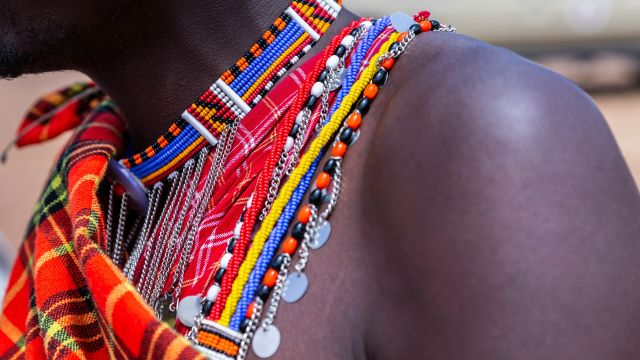Under the shade of corrugated roofs and canvas awnings, Botswana’s open-air markets unfold in a mosaic of color, sound, and scent. Rows of stalls brim with handwoven textiles, beadwork, pottery, and carved wood, each item a testament to a craft tradition shaped by generations of skill and cultural memory. These spaces are more than commercial hubs; they are living archives of the nation’s artistry and daily rhythms.
Bolts of fabric, dyed in deep indigos and sun-baked reds, hang from wooden poles, their patterns tracing stories of ancestral myths and local history. The geometric motifs on a woven shawl might echo the lines of traditional architecture; a tablecloth’s repeating pattern could mirror the ripple of the Okavango Delta in flood. Many of these textiles are produced with techniques that have resisted industrial shortcuts, retaining a tactile quality that speaks to the maker’s hand.
The air hums with a chorus of voices. Vendors greet familiar customers in Setswana, bargaining with a mix of humor and determination. Children weave through narrow aisles, balancing baskets of fruit or trays of snacks. From a corner stall, the scent of simmering beef stew mingles with the sharp tang of fermented sorghum beer. A table piled with pap—a maize porridge staple—sits beside trays of biltong, the dried and spiced meat that remains a favorite throughout the region. These food offerings serve not just as sustenance, but as edible markers of Botswana’s agricultural abundance and culinary continuity.
Amid the bustle, artisans shape clay into vessels, string beads into intricate necklaces, or chip at blocks of hardwood to reveal smooth, expressive figures. The work is deliberate, even meditative, each gesture preserving a craft lineage that competes daily with the pull of mass-produced imports. The sale of a single handcrafted piece may sustain a household, while also ensuring that the skills—beading patterns, carving styles, pottery forms—remain part of the community’s shared knowledge.
Such markets function as vital social spaces as much as economic ones. Transactions often give way to conversation, and purchases are accompanied by stories: how a pot’s glaze reflects the minerals of local soil, or why a bracelet’s design aligns with the phases of the moon. These exchanges deepen the connection between craftsperson and buyer, embedding each object with meaning beyond its material form.
Botswana’s markets, with their dense weave of commerce, tradition, and human connection, offer an unfiltered portrait of national identity in motion. In every bead, every thread, every shared meal, the enduring spirit of craftsmanship and community finds expression—vivid, unhurried, and unmistakably local.
Sources:
- Denbow, James, and Thebe, Phenyo. Culture and Customs of Botswana. Greenwood Press, 2006.
- Morton, Fred. “Arts and Crafts in Botswana: Past and Present.” Botswana Notes and Records, vol. 28, 1996.
- Solway, Jacqueline S. “Markets and Marketplaces in Southern Africa.” Journal of Southern African Studies, vol. 26, no. 4, 2000.

